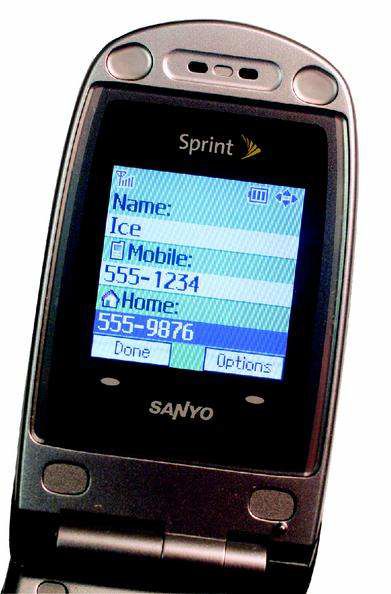Experts urge use of ICE numbers in cell phones
Published 4:00 am Thursday, November 16, 2006

- Experts urge use of ICE numbers in cell phones
With the ever-increasing popularity of cell phones, public officials are looking for new ways to leverage their presence for health and safety goals.
Emergency physicians are recommending that people with cellular phones add an emergency contact number in their cell phone address books under the heading ICE. The acronym stands for In Case of Emergency and medical professionals are using the numbers to notify an emergency contact and to get vital medical information when a patient arrives unconscious or unable to answer questions.
”People assume they will be able to communicate their medical history when they need emergency medical care. But when people are seriously injured, that may not be the case,” says Dr. Frederick Blum, past president of the American College of Emergency Physicians. ”Knowing which phone number to call to get vital information helps doctors and nurses to provide better and more effective care.”
Paramedics, nurses and doctors are increasingly looking for such contact numbers in cell phone address books, although emergency room officials at St. Charles Medical Center-Bend said they have had no such experiences to date.
The emergency physicians group recommends programming two ICE numbers, under ICE – 1 and ICE – 2 to increase the chances of reaching someone. ICE contacts should be familiar with the person’s medical history.
”We recommend that patients continue to carry a summary of their medical histories in their wallets as well,” Blum says. ”Cell phones don’t always work and having the information on your person is always a good idea.”
Those summaries should include a list of medications taken, known allergies and the names of phone numbers of doctors responsible for your regular care.
”The more information we have about a person’s medical background, the better,” Blum says. ”In emergency medicine, we often do not have the benefit of knowing the patient’s medical history.”
The concept of adding an ICE number to cell phone address books was conceived by a British paramedic but has quickly gained ground in the U.S., where nearly 207 million Americans have cell phones. Not only does that mean a majority of Americans have a cell phone, it’s a device they’re likely to carry with them at all times. Researchers at the San Diego Supercomputer Center are working on ways to store complete medical records on cell phones with increasingly sophisticated graphic chips.
Cell phones may also offer public officials an easy way to get critical information to people in crisis situations. In September, Congress passed the Warning, Alerts and Response Network Act that will create a national alert system by providing Americans with emergency information sent directly to their cell phones and other wireless devices.
That can help people avoid disasters but could also allow them to help in recovery efforts. The American Red Cross and wireless industry trade group CTIA are collaborating to allow cell phone users to text-message donations in the event of a major disaster.
If another Hurricane Katrina were to strike, subscribers of participating wireless carriers will be able to send a text message to ”2HELP” containing the word ”HELP,” and a $5 tax-deductible donation will be made to the American Red Cross for disaster relief efforts. The donations will then appear on customers’ monthly bills or be debited from prepaid account balances.






